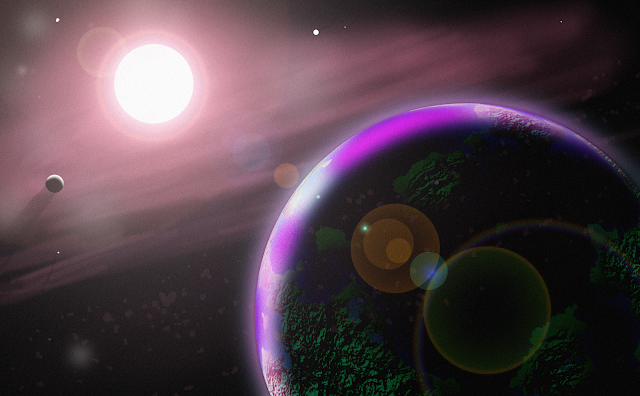TRAPPIST-1
We interrupt our paleoart for some breaking news!
As I'm sure you've heard by now, NASA announced a remarkable discovery yesterday. For the last seven years, scientists around the world have been using the new TRAPPIST (Transiting Planets and Planetesimals Small Telescope) device in Chile to scour the universe for new exoplanets. It was originally just supposed to teach us more about the composition of our universe, but they instead found something groundbreaking.
A little under forty light-years away lies the first unnamed system the telescope has observed, now called TRAPPIST-1. In May of 2016, Scientists found two terrestrial planets surrounding it, which in itself is rather unique. However, further research into the system has recently shown a more complex system than we previously thought. We now know the size, compositions, and positions of no less than seven rocky planets around the star, and all of them lie within the star's habitable zone- close enough for the star's heat to sustain liquid water. Most intriguing of all is the seventh planet, TRAPPIST-1h, which has strong evidence of frozen water on it. This means that there is a very high probability of liquid water on the other planets and, therefore, life.
This was the moment where every science-fiction author cheered. TRAPPIST-1 has been classified as a red dwarf star, a cosmological oddity on its own. While most stars burn through their fuel in a few billion years, red dwarves burn through their fuel slowly and cool enough to last for trillions of years. These objects are so cold, in fact, that their habitable zone is incredibly close to itself- nowhere near as far as even Venus' orbit to our own sun. Finding not one but seven exoplanets in the zone of an ancient star that was never expected to have any life makes this more than just a lucky find- more of a near-impossibility.
Running on my own hypothesis here, the fact that this is such an old star has a lot of implications for the type of life we'd expect to find. Mind you these can last for such long periods that not one has completed a full life cycle since the beginning of the universe itself. The longer the star has been around (or, at the very least, the longer the planets have been orbiting the star,) the more likely life could have spontaneously generated on at least one of its satellites regardless of their tidal locks. If they managed to survive to an advanced civilization, they could have far less trouble reaching nearby planets. Unlike our system, TRAPPIST-1's proximity means that neighboring exoplanets have an apparent size similar to our moon's in each planet's sky on a regular basis. With such ease of access to different environments and resources, a Class-1 civilization, or maybe even Class-2, is almost inevitable.
Of course, this is my own conjecture, and there are problems with this line of thinking. Regardless of the fact that we don't even have any evidence of life on this system, there is a simple matter of physics getting in the way. TRAPPIST-1 is some two hundred and thirty trillion miles away from Earth, and our fastest spacecraft haven't even managed to escape our sun's gravitational pull yet. There is little chance of ever being able to communicate with anything there, let alone setting foot on any of its planets with our current technology. It may be enticing, but we will need to take smaller, more economically-friendly steps before we reach this system. Ideally, we would need to colonize our own solar system to learn as much as we can about interplanetary travel first. Then interstellar space with Alpha Centauri, and so on.
Regardless of our current limitations, it truly is a remarkable time to be alive for space exploration. Two decades ago, it wasn't even a possibility that terrestrial expolanets exist at all, let alone that seven life-primed worlds could exist in the same system. With our current plans to return to the moon, visit Mars, and even send drones to other star systems (Source), we may yet find our way as a galactic presence. This current generation may never see the day when that happens, but we are paving the way for our grandchildren and great-grandchildren to do so simply by taking pictures with programs like TRAPPIST, and the thought of that is more powerful and enlightening than any piece of science fiction could be.
I mean, I'll still draw sci-fi pictures and everything, but it's a neat idea.
Rendered in Photoshop, Sourced from nasa.gov

Comments
Post a Comment
Thank you very much for your thoughts! If you have questions, we will attempt to reach back to you within the next few days.